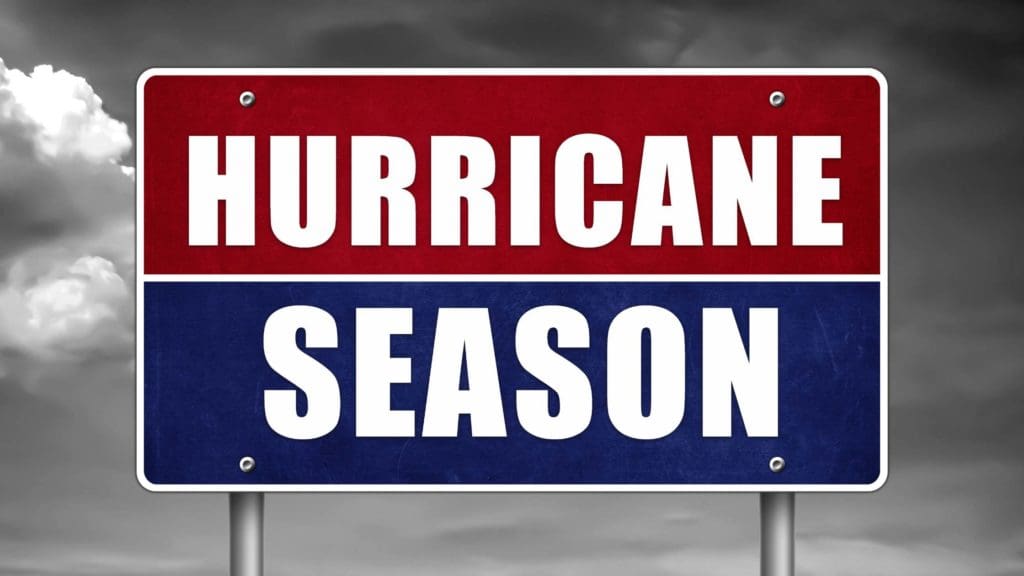The Atlantic hurricane season has officially begun! Although the historical peak of the season is from mid-August through mid-October, it’s never too soon to start preparing for a hurricane. The best way to protect yourself, your family, and your property is to get ready for extreme weather events well in advance. Here is a succinct guide on how to prepare for a tropical storm that may escalate into a hurricane.
Make an Emergency Plan
Right before or at the beginning of each hurricane season, it’s important to review the designated evacuation routes and official hurricane shelter locations. As well, establish how you’ll get in touch with your family members and where you’ll meet if you get separated. You should also install theFEMA disaster mobile app, which contains safety tips, a map with open shelters and Disaster Recovery Centers, and interactive lists for storing emergency information. If you have pets, don’t forget to include them in your emergency plan. Make sure that all of them have been microchipped and/or have ID tags, so you can find them in case they get lost.
Prepare an Emergency Kit
Your hurricane emergency kit should include first-aid supplies, flashlights, batteries, a cell phone charger, basic toiletries, cash, a weather radio, nonperishable foods, and bottled water for several days. If you already have a hurricane emergency kit, you should add extra cloth face coverings or masks, a hand sanitizer, and disinfecting wipes, according to thelatest health and safety guidelines issued by the CDC. Remember to also pack enough food and water for your pets along with a few collars, leashes, muzzles, and all the medications they need during the emergency.
Check Your Insurance Policy
One important aspect is that insurers won’t issue new or additional insurance if there is already a hurricane watch or warning in effect for the area. Therefore, make sure that you have adequate coverage before a hurricane strikes. While the standard homeowner’s insurance policies typically cover damage from hurricanes, most of them don’t include coverage forfloods. To fully protect your home and its contents, it’s advisable to purchase a separate flood insurance policy.
Fortify Your Home against Potential Wind and Water Damage
When it comes to protecting your home from wind and flood damage, there are a few measures you can implement in order to prevent or reduce damage to your property during a hurricane. One of them is elevating your home to the recommended Flood Protection Elevation (FPE) level. The height of elevation required depends on a series of aspects, including your home’s current elevation, potential changes to the flood sources around your home, and factors that may lead to higher flood levels during a hurricane.
In addition toretrofitting your home for flood prevention, you could opt for a few more protective measures in order to make your home more hurricane-resistant. The most common anti-hurricane measures include:
- using hurricane straps or clips to fasten your roof to walls;
- boarding up entry points, like windows and doors, and other vulnerable parts of your home with storm shutters;
- installing a sump pump to draw water away through pipes into the drainage system;
- securing the items that could become windborne missiles and damage your home;
- installingFEMA-compliant engineered flood vents that allow stormwater to flow through your foundation walls instead of destroying them;
- waterproofing your siding and lower-level walls with suitable sealers.
Additionally, ensuringproper drainage around your foundation is a great strategy to minimize water damage to your home. If you identify any drainage issues, regrading your landscape slope will allow you to direct stormwater away from your foundation.
When it comes to protecting your loved ones and your property from a hurricane, you can never be too prepared. That’s one of the reasons why specialists recommend homeowners to elevate their homes that are either prone to flooding or have a greater risk of flooding. To decide whether you should elevate your home or not, it’s essential to know the minimum home elevation recommended for your area. To find out if your home complies with the FPE level required, feel free to drop us a line using ourcontact form or call our friendly professionals at 713-489-4900. We’ll be happy to help!

